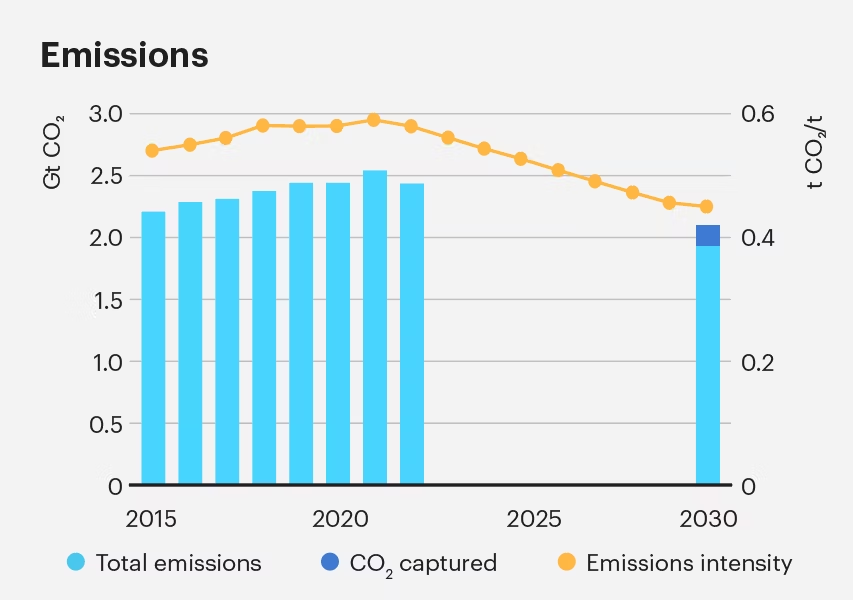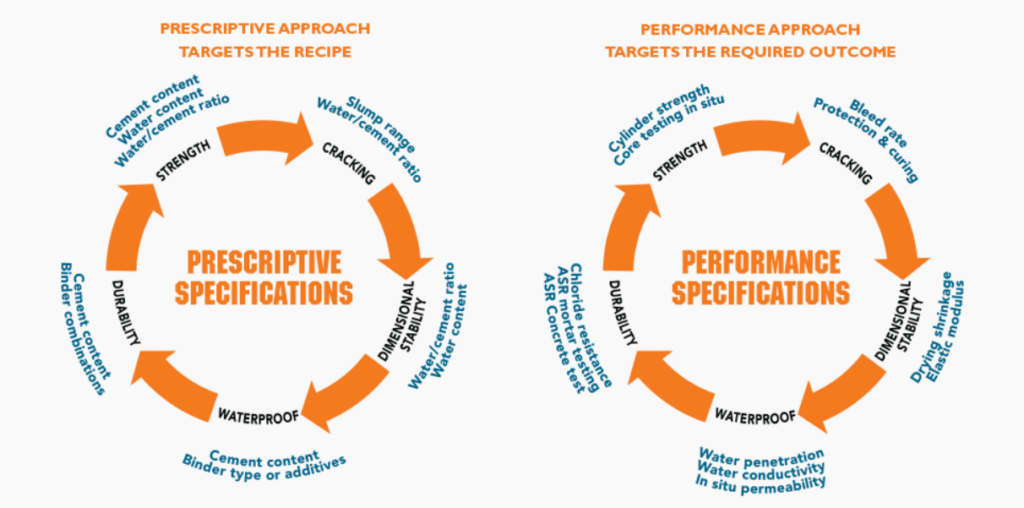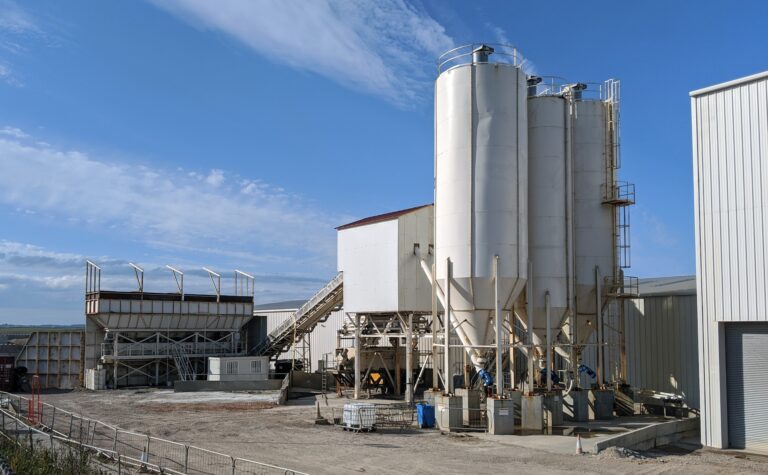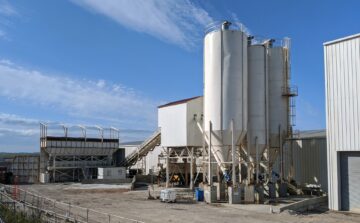Optimizing concrete mixtures is essential in adapting to evolving sustainability requirements being imposed on ready-mix organizations globally. However, this effort is challenged by several factors including the emergence of new materials, evolving demands, diverse market standards, and limitations in testing practices. This blog explores these challenges and outlines how industry stakeholders can collaborate to drive sustainable construction practices with optimized concrete mixtures.
Explore 12 Futuristic Technology Trends Solving Concrete's Biggest Challenges.
Complexities of Optimizing Concrete Mixtures
- Navigating Material Shifts: The construction industry is constantly navigating significant material shifts, due to changing requirements, supply chain shortages, and the need for alternative sources, which directly impacts a producer’s ability to optimize their mixes. Innovations such as ultra-high-performance concrete, recycled aggregates, and various cement types offer new opportunities but demand careful adaptation. Hence, managing these shifts involves addressing performance variations, maintaining clear communication with stakeholders, and being able to optimize under pressure. Ready-mix producers will often overdesign a mix to compensate for unknown characteristics of new materials to avoid any risk.
- Meeting Evolving Demands Without Sacrificing Quality: As sustainability becomes a paramount concern, the demand for eco-friendly construction materials has skyrocketed. Optimizing concrete mixtures to eliminate waste, reduce carbon emissions, and lower costs must be balanced against the need to maintain high-quality standards. While lowering cement content improves the concrete’s thermal performance, it in turn also slows strength gain, which can delay project timelines. Hence, achieving this balance requires heavy testing and robust quality control measures. This approach maintains both performance and efficiency without the need for excessive overdesign.

- Prescriptive vs. Performance-Based Markets: The global ready-mix market is diverse, with different regions adopting varying approaches to concrete mixture specifications. In some areas, prescriptive methods that dictate exact formulations are prevalent, while others prefer performance-based standards that focus on the results. In prescriptive markets, optimizing concrete mixes becomes more challenging, as rigid specifications often conflict with sustainability requirements.

- Limitations in Testing Practices: Despite technological advancements, the adoption of modern testing practices for concrete strength continues to be slow. Traditional methods can be time-consuming, costly, and often inaccurate. These constraints hinder the ability to rapidly iterate and optimize mixtures, delaying the adoption of innovative materials and practices. To address these limitations, the industry must collaborate in adopting more reliable testing methods that can measure in-situ performance. After all, concrete mixture optimization can only go as far as the testing used for acceptance will allow.
Overcoming the Challenges: Collaborative Solutions
Addressing the complexities of optimizing concrete mixtures for sustainable construction requires a multifaceted approach. Industry stakeholders must collaborate, share knowledge, and embrace new technologies to drive progress at the rate required to match growing demands.
- Building More Awareness: Creating awareness about the importance of optimized concrete mixtures is crucial. As producers work to reduce carbon impact, contractors must also adopt less carbon-intensive practices. New materials require greater transparency and a reevaluation of cement and admixture interactions. Therefore, educating stakeholders about achieving leaner, high-quality results is vital to setting new standards and ensuring the effective use of sustainable materials.
- Enhancing Testing Practices: Traditional testing methods often lack the agility and accuracy required to keep pace with the industry’s rapid advancements. As a result, excessive over-design becomes a necessary compensatory measure. This intentional over-design not only creates limitations in optimization but also creates challenges in effectively utilizing advanced testing technologies. Adopting improved methods, such as non-destructive testing and real-time monitoring systems, is crucial for enhancing accuracy and efficiency. Sharing this data across all stakeholders will facilitate more informed decision-making, drive new trends, and ensure consistent quality.
- Leveraging AI: Artificial Intelligence (AI) has the potential to revolutionize the optimization of concrete mixtures. AI algorithms can analyze vast amounts of data to identify optimal formulations, predict performance outcomes, and suggest improvements. By leveraging AI, the industry can accelerate the development of sustainable concrete mixtures, reduce material waste, and enhance overall efficiency. AI can help gather and analyze the extensive data required to make informed decisions, ensuring all stakeholders are equipped with the insights needed to optimize effectively.
Finding the Best Mix Management System
One prominent example is Giatec’s latest mix management system, SmartMix™. Powered by AI, SmartMix analyzes data from your concrete operations to deliver immediate reports and insights, highlighting opportunities for optimization and waste reduction. Its predictive features facilitate quick, effective decision-making for both incremental adjustments and large-scale optimizations. By generating numerous scenarios in seconds, SmartMix seamlessly presents each option’s impact, empowering you to get the right mix every time. You can save new revisions and seamlessly send them back to your batch system with a single click.

The Role of Collaboration and Education
For optimized concrete mixtures to drive sustainable construction practices, a collaborative effort among all industry players is essential. Material suppliers, researchers, and construction professionals each have different testing capabilities and insights. By sharing data and collaborating on testing programs, stakeholders can develop new models that reflect current materials and production methods. Trade associations and educational institutions also play a critical role in this process. Developing curricula focused on optimization, advanced testing, and AI can prepare future engineers to embrace these practices from the outset. While optimizing concrete mixtures can be challenging, the improved quality, performance, and cost-efficiency make it well worth the effort.
Curious about the impact of AI on optimizing concrete mixtures? Explore our ‘Building Better with AI’ mini-series for a deep dive into the industry’s latest advancements.
References
- IEA. 2023. Cement Breakthrough Agenda Report 2023. https://www.iea.org/reports/breakthrough-agenda-report-2023/cement
- Mackechnie. J. 2020. Performance Specification Guidelines for the Supply of Ready-mixed Concrete in New Zealand. Concrete NZ. https://concretenz.org.nz/page/Specification_01










